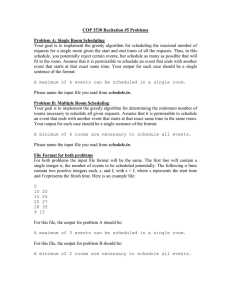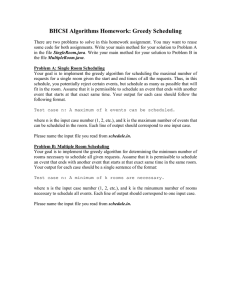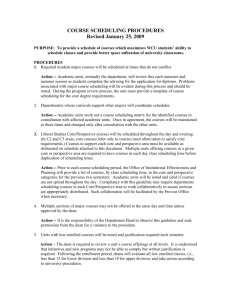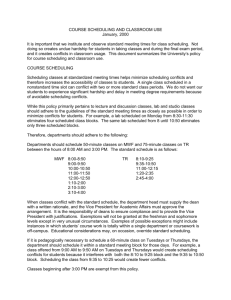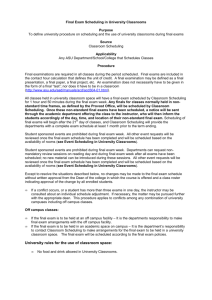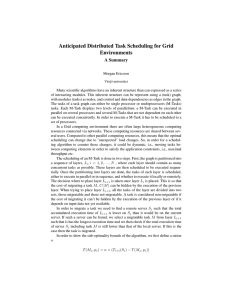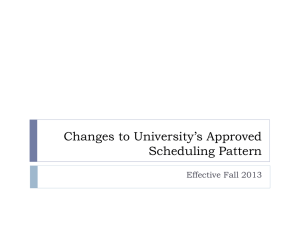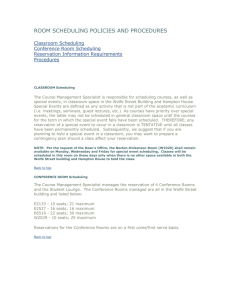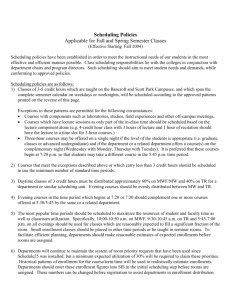Scheduling Guidelines
advertisement
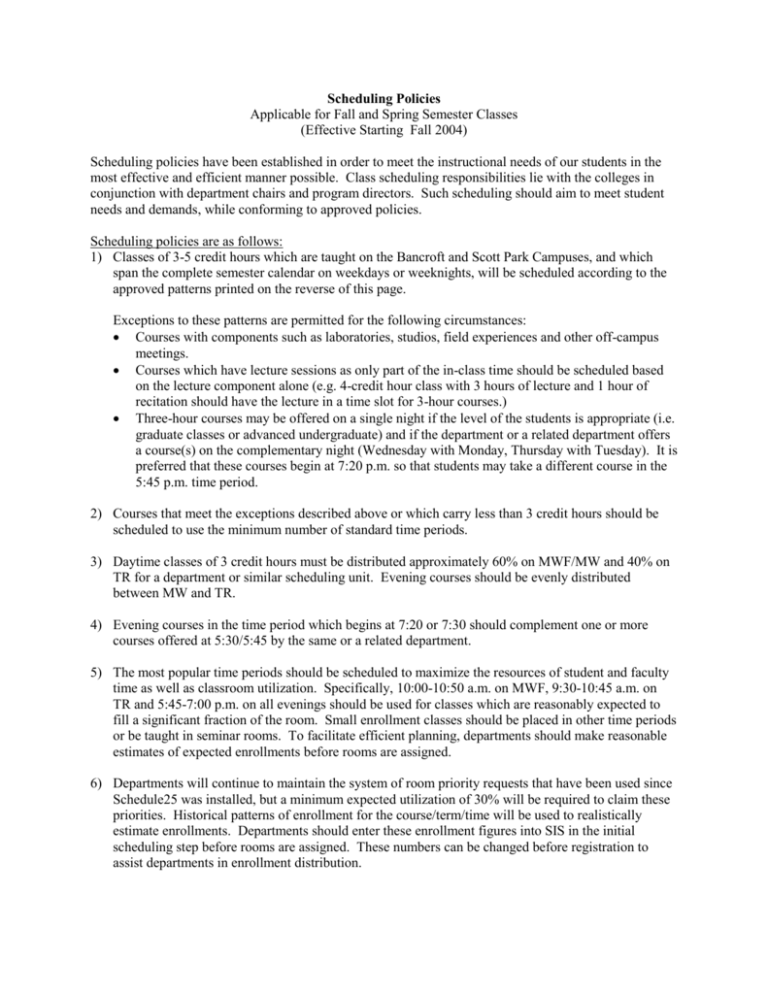
Scheduling Policies Applicable for Fall and Spring Semester Classes (Effective Starting Fall 2004) Scheduling policies have been established in order to meet the instructional needs of our students in the most effective and efficient manner possible. Class scheduling responsibilities lie with the colleges in conjunction with department chairs and program directors. Such scheduling should aim to meet student needs and demands, while conforming to approved policies. Scheduling policies are as follows: 1) Classes of 3-5 credit hours which are taught on the Bancroft and Scott Park Campuses, and which span the complete semester calendar on weekdays or weeknights, will be scheduled according to the approved patterns printed on the reverse of this page. Exceptions to these patterns are permitted for the following circumstances: Courses with components such as laboratories, studios, field experiences and other off-campus meetings. Courses which have lecture sessions as only part of the in-class time should be scheduled based on the lecture component alone (e.g. 4-credit hour class with 3 hours of lecture and 1 hour of recitation should have the lecture in a time slot for 3-hour courses.) Three-hour courses may be offered on a single night if the level of the students is appropriate (i.e. graduate classes or advanced undergraduate) and if the department or a related department offers a course(s) on the complementary night (Wednesday with Monday, Thursday with Tuesday). It is preferred that these courses begin at 7:20 p.m. so that students may take a different course in the 5:45 p.m. time period. 2) Courses that meet the exceptions described above or which carry less than 3 credit hours should be scheduled to use the minimum number of standard time periods. 3) Daytime classes of 3 credit hours must be distributed approximately 60% on MWF/MW and 40% on TR for a department or similar scheduling unit. Evening courses should be evenly distributed between MW and TR. 4) Evening courses in the time period which begins at 7:20 or 7:30 should complement one or more courses offered at 5:30/5:45 by the same or a related department. 5) The most popular time periods should be scheduled to maximize the resources of student and faculty time as well as classroom utilization. Specifically, 10:00-10:50 a.m. on MWF, 9:30-10:45 a.m. on TR and 5:45-7:00 p.m. on all evenings should be used for classes which are reasonably expected to fill a significant fraction of the room. Small enrollment classes should be placed in other time periods or be taught in seminar rooms. To facilitate efficient planning, departments should make reasonable estimates of expected enrollments before rooms are assigned. 6) Departments will continue to maintain the system of room priority requests that have been used since Schedule25 was installed, but a minimum expected utilization of 30% will be required to claim these priorities. Historical patterns of enrollment for the course/term/time will be used to realistically estimate enrollments. Departments should enter these enrollment figures into SIS in the initial scheduling step before rooms are assigned. These numbers can be changed before registration to assist departments in enrollment distribution.
